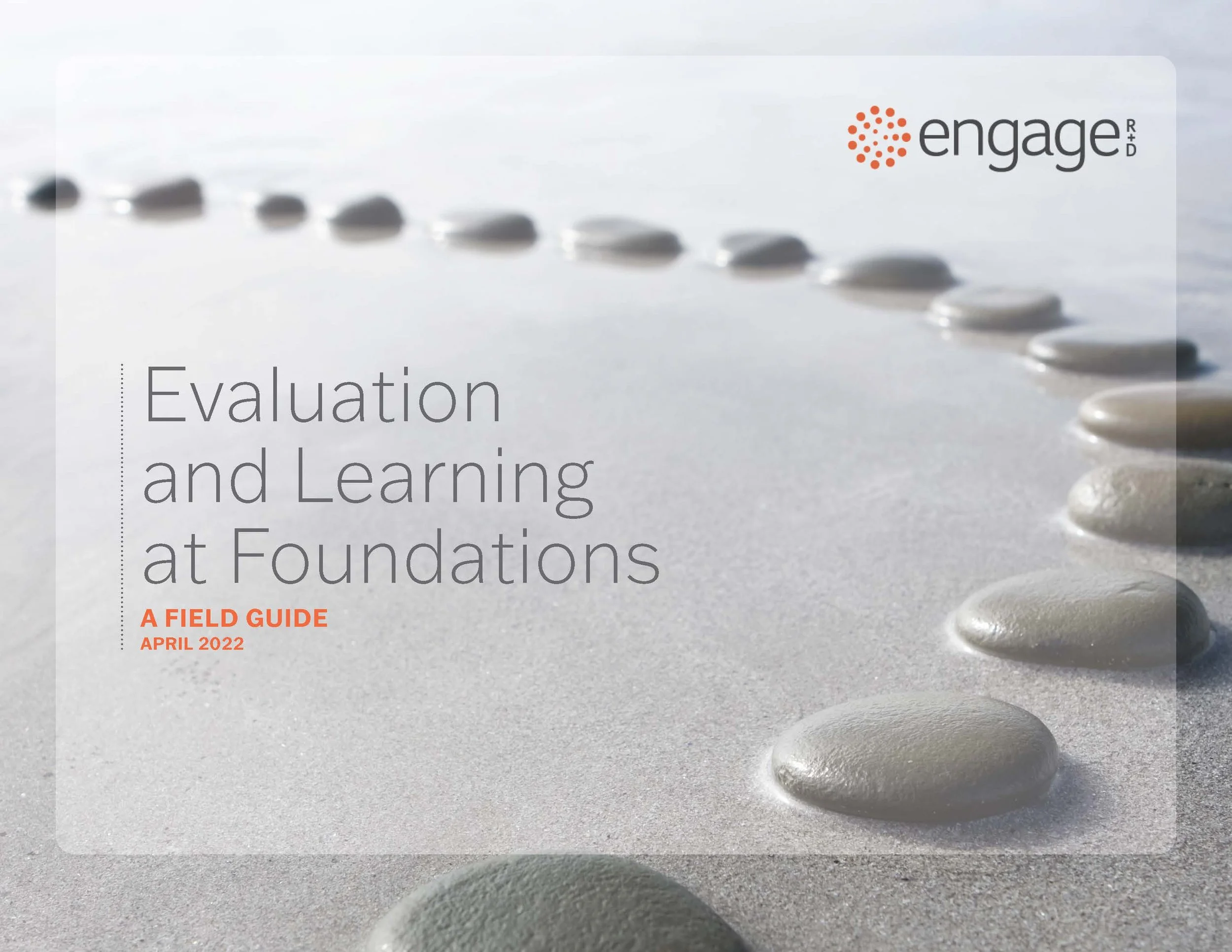How To Be Extraordinary
/by Clare Nolan, Cristina Whyte, and Anna Saltzman
We are living in extraordinary times. “Historically, pandemics have forced humans to break with the past and imagine the world anew.” Arundhati Roy wrote these words two years ago this month in what became a seminal piece. In it, she described COVID-19 as “a portal, a gateway between one world and the next.”*
As we enter our third spring living with the pandemic, it’s hard not to wonder how far along we are in this portal and how we conjure the collective imagination and determination needed to make it to another, better side.
For those working in philanthropy, the past few years have been marked by tremendous pressure and expectation. In addition to resourcing efforts to ameliorate the effects of COVID-19, redress current and historical racial injustice, and help communities mitigate and adapt to climate change and other pressing issues, funders are facing calls to make fundamental changes in how they work.** The same holds true for evaluators. As the Presidential Strand Committee of the American Evaluation Association recently asserted: “The time for change is now. Evaluators, we have a responsibility to act with urgency to help transform the systems, policies, and practices that have created today’s challenges, and help build toward a more equitable, sustainable future.”***
At Engage R+D, we believe that evaluation and learning (E&L) leaders have the potential to be extraordinary and make critical contributions to equity and justice in our current transformative moment. But to do so, they need knowledge, tools, encouragement, and support. With this in mind, we are excited to release Evaluation and Learning at Foundations: A Field Guide geared towards helping E&L leaders working in philanthropy navigate their dynamic and complex roles.
To produce the guide, we interviewed 25 staff at the Ewing Marion Kauffman, James Irvine, and Kresge foundations, conducted a literature review of foundation E&L practices, and drew on our firm’s experience partnering with diverse foundations on evaluation, strategy, learning, and equity. This process yielded insights which this guide distills into concrete and actionable advice. Tips and resources in this field guide include:
A tool to help new E&L leaders navigate their roles. To be effective in their positions, leaders need to understand their purpose as well as the unique context and dynamics of their organization. The guide provides concrete steps for new leaders to grow their understanding and set feasible goals and priorities.
Nuts and bolts guidance on building credibility. E&L leaders who aspire to advance equity must be able to demonstrate the value of E&L and cultivate internal credibility within their foundations. The guide shares a case example to illustrate the ways in which small wins can help set the stage for deeper influence and longer-term organizational shifts.
A framework for finding entry points for equity. Our research found that three factors influence the ability of E&L teams to support foundation-wide equity efforts: 1) a foundation-wide commitment to equity; 2) a foundation-wide commitment to E&L; and 3) an E&L team’s readiness to address equity. E&L leaders can use this framework to find starting points for supporting equity more broadly within their organizations.
Ideas on how to respond to common challenges. Navigating competing goals and contrasting opinions is critical for E&L leaders. The guide describes four common tensions E&L leaders regularly confront in their roles and supplies advice and examples for how to manage them. It also encourages leaders to cultivate a network of peers outside their organization that they can tap into for advice and support.
We see the release of this guide as the start of something exciting. If you would like to learn about upcoming webinars and events drawing upon the ideas in the guide, sign up for our mailing list. We also plan to release a companion brief later this year geared towards foundation CEOs.
We are grateful at Engage R+D to be in the company of so many extraordinary leaders in the evaluation and learning community. We would like to especially thank Anna Cruz, Brett Hembree, Chera Reid, Fontane Lo, Jessica Mindnich, Julia Coffman, Katherine Lee, Kim Ammann Howard, Matthew Carr, Sarah Smith, and Yvonne Belanger for their thought partnership and support of this effort. We are also thankful for Jara Dean-Coffey and the rest of the team at the Equitable Evaluation Initiative for their continued leadership in helping the sector reimagine its existing evaluation approaches.
*Roy, A. (2020, April 3). The pandemic is a portal. Financial Times. Retrieved April 14, 2022, from https://www.ft.com/content/10d8f5e8-74eb-11ea-95fe-fcd274e920ca
**See, for example, the Center for Effective Philanthropy’s series of reports on how foundations are responding to current crises.
***Boyce, A., Hoffman, S., Archibald, T., & Olazabal, V. (n.d.). (re) shaping evaluation together. American Evaluation Association. Retrieved April 14, 2022, from https://www.eval.org/Events/Evaluation-Conference/Conference-Theme



